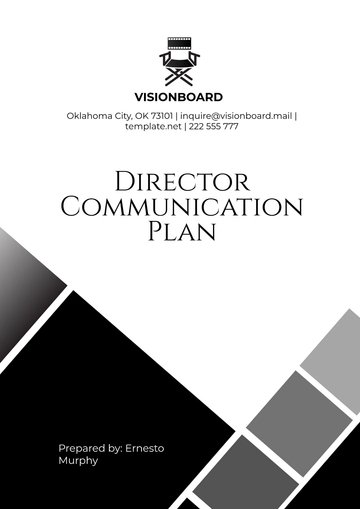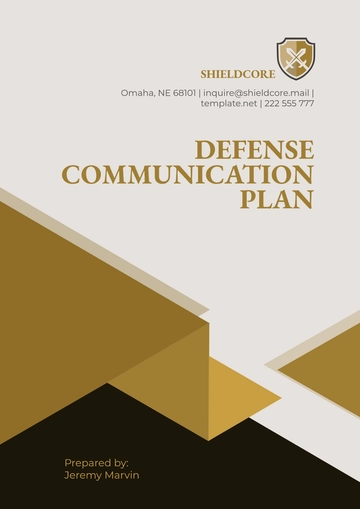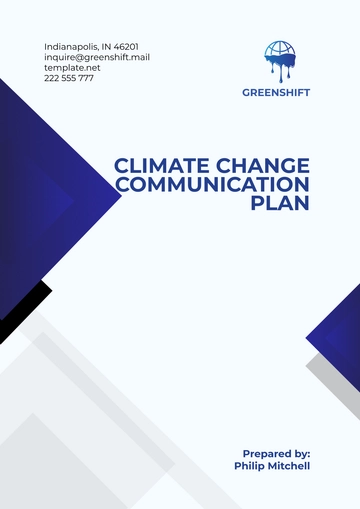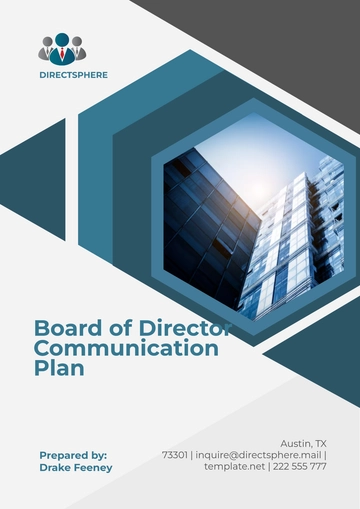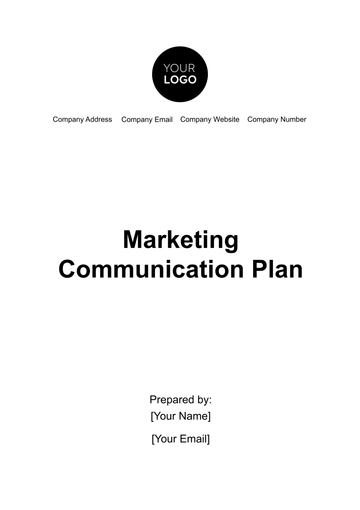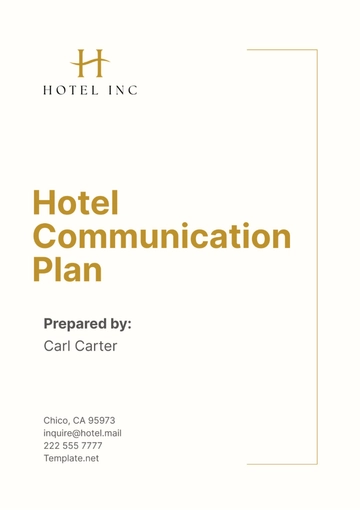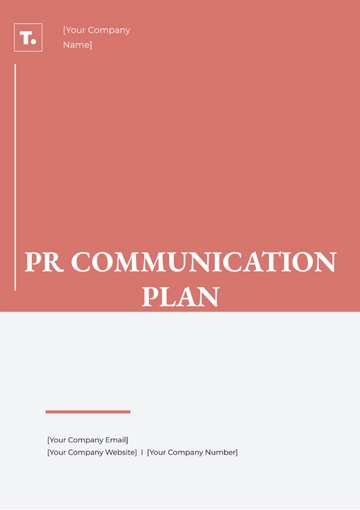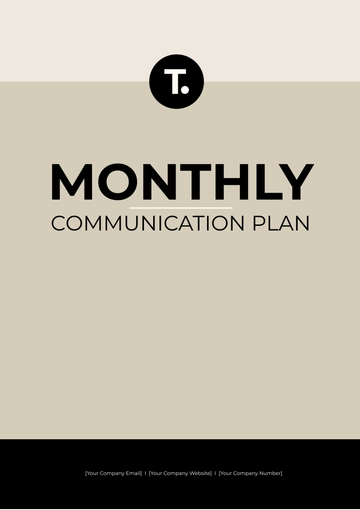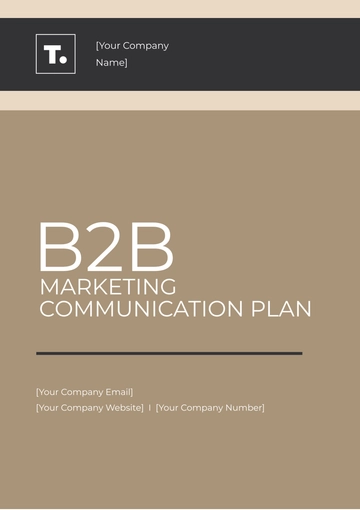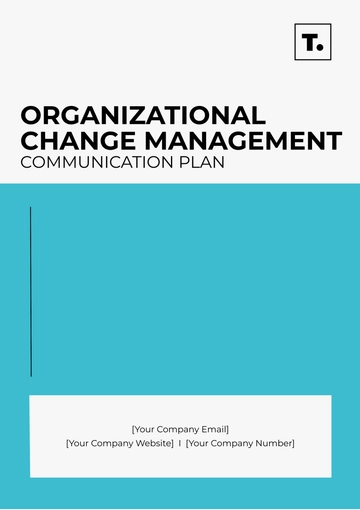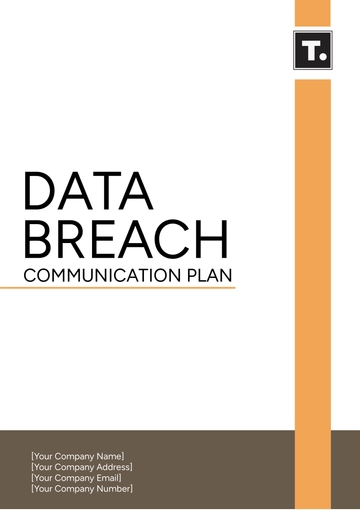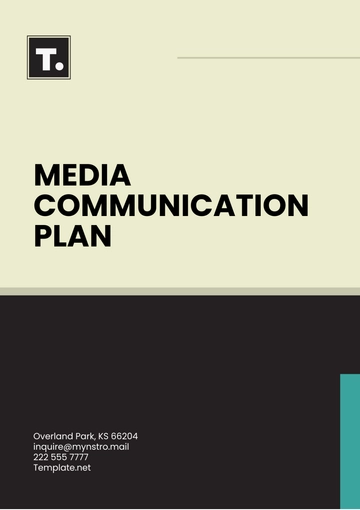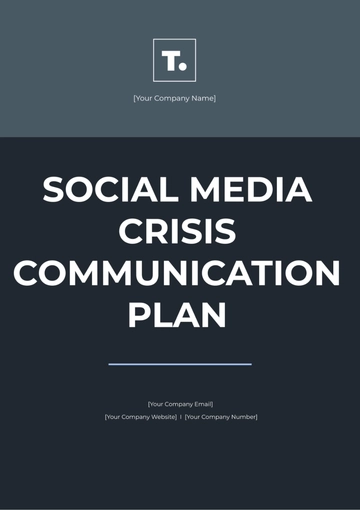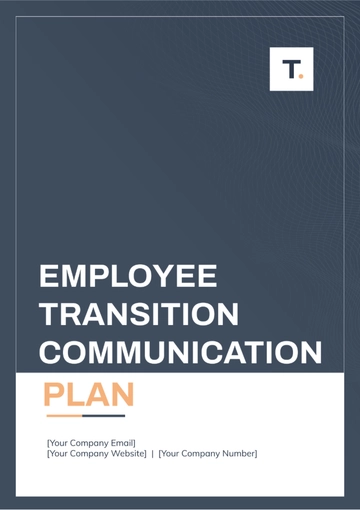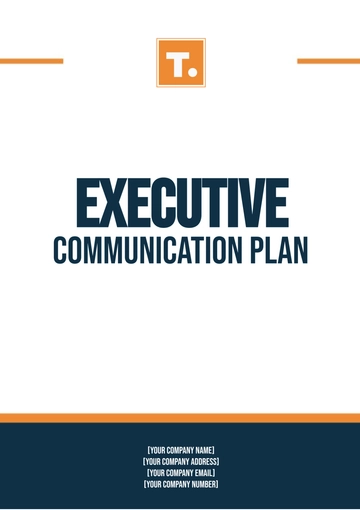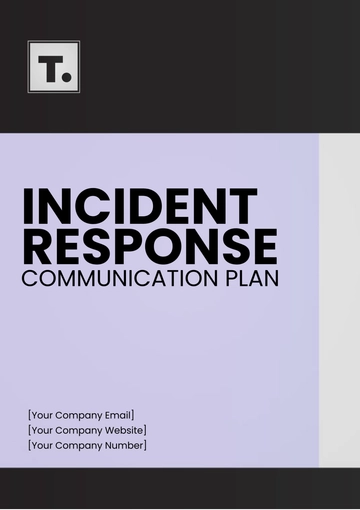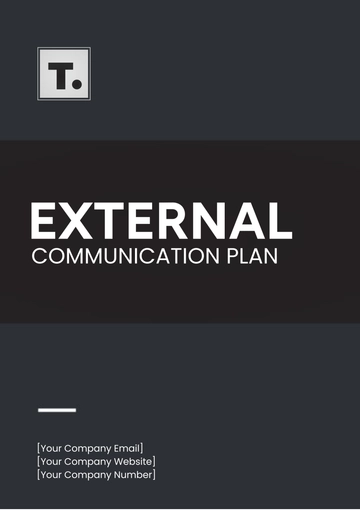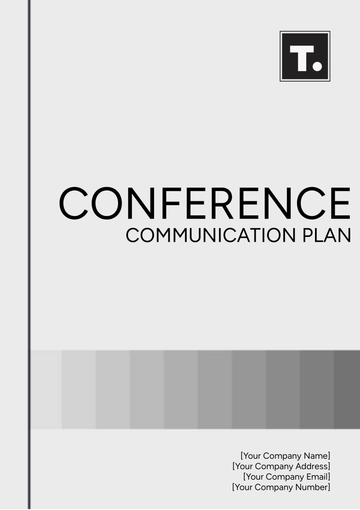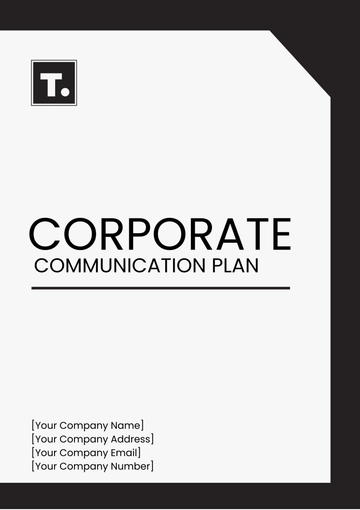Free Law Firm Communication Plan

1. Plan Objective
The primary objective of this communication plan is to enhance connectivity among departments and ensure coherent team functionality within [Your Company Name]. This plan is crucial for fostering a seamless operational environment, facilitating efficient workflows and promoting a unified firm culture. It aims to establish a comprehensive set of protocols for both internal and external communications, which will represent our firm consistently and professionally to all stakeholders. By implementing structured communication practices, we are setting the foundation for sustained organizational success and enhancing our ability to provide exceptional legal services.
2. Internal Communication Strategy
Effective internal communication is the backbone of any successful law firm. Recognizing this, our strategy focuses on fostering open lines of communication across all levels of the organization. We will institute regular intra-department meetings, each with clearly defined focuses to ensure actionable outcomes and strategic alignment. These meetings are designed not only to keep various teams informed and cohesive but also to empower individuals by giving them a platform to voice concerns and contribute ideas.
Detailed Timetable for Intra-Department Meetings:
Day | Department | Time | Main Focus |
|---|---|---|---|
Monday | Legal | 9:00 - 10:00 | Reviewing cases, updating legal strategies |
Tuesday | Paralegals | 10:00 - 11:00 | Streamlining documentation, case follow-ups |
Wednesday | Administrative | 11:00 - 12:00 | Operational updates, addressing staff issues |
Thursday | Management | 9:00 - 10:00 | Strategic firm planning, management updates |
These meetings will be structured to maximize productivity and minimize disruption to daily activities, ensuring that every session translates into tangible improvements in our work processes and client handling.
3. External Communication Strategy
Our firm's reputation hinges on how effectively we communicate with external parties. Therefore, our external communication strategy is designed to uphold and enhance the professional image of [Your Company Name]. This strategy is multifaceted, addressing everything from the tone and quality of our communications to the mediums through which they are delivered.
Professional Language: We will maintain the highest standards of professionalism in all communications. This includes careful attention to the clarity, accuracy, and appropriateness of the language used in legal documents, correspondence with clients, and public communications.
Prompt Responses: Timeliness in our responses to client inquiries and communications is essential for client satisfaction and the efficient management of cases. Our goal is to respond to all client communications within 24 hours, ensuring that our clients feel valued and well-informed.
Media Relationships: Developing and maintaining strong relationships with media outlets is crucial. These relationships will help us manage our public image and disseminate important firm news effectively. We will actively engage with both local and national media to ensure that our narrative is communicated accurately and favorably.
Digital Presence: In today's digital age, an active and engaging online presence is vital. We will regularly update our firm’s website and social media platforms with current activities, achievements, and informative content. This will not only enhance our visibility but also serve as a resource for current and potential clients.
Press Alignment: All press releases and public communications will be carefully crafted to align with the firm’s values and branding strategy. This alignment ensures that every piece of information released reinforces our firm's image as a leader in the legal sector, committed to upholding the highest standards of service and integrity.
By implementing these strategies, we aim to enhance our internal cohesion and maintain a strong professional image, which are essential for providing superior legal representation and building lasting relationships with our clients and the community.
4. Crisis Communication Strategy
A robust crisis communication strategy is vital to safeguard the firm's reputation and ensure continuity during unexpected situations. Our approach emphasizes transparency, professionalism, and preparedness to mitigate possible adverse impacts effectively.
Roles and Responsibilities: For each type of crisis, specific roles will be assigned to ensure a coordinated response. Key roles will include a spokesperson responsible for all external communications, a client liaison to maintain client trust and inform them of the situation, and a legal team to handle any legal implications. By delineating these roles clearly, we ensure that all communications are consistent and managed by the most qualified individuals.
Prepared Scenarios: We will develop detailed action plans for a variety of potential crises, such as data breaches, client data leaks, or negative publicity. Each scenario will include predefined steps for containment, communication, and resolution. Regular scenario-based drills will be conducted to ensure readiness and to fine-tune our response strategies, minimizing response times and improving efficiency in real situations.
Communication Channels: Establishing reliable communication channels is crucial for effective crisis management. We will maintain dedicated lines for internal communication and designated platforms for external communication to keep our staff and clients well-informed during crises.
5. Staff Training Strategy
Comprehensive training programs are essential for implementing effective communication practices throughout the firm. Our strategy includes a variety of training modules designed to enhance skills relevant to our daily operations and special situations:
Effective Communication Skills: Regular workshops will be held on both oral and written communication, focusing on crafting clear, concise, and professional messages. Special attention will be given to email etiquette and phone communication techniques, critical for maintaining professionalism in client interactions.
Legal Confidentiality: All staff members will receive training on the latest confidentiality and privacy laws that impact client communication. This training will ensure that all communications comply with legal standards and maintain client trust.
Crisis Management Training: To prepare our team for potential crises, we will provide scenario-based training using role-plays to simulate crisis situations. This training will help staff develop quick thinking and effective communication under pressure, ensuring they are prepared to handle any situation with confidence and professionalism.
6. Tools and Platforms
The selection and deployment of digital tools and platforms are key components of our communication plan, aiming to enhance efficiency and security in our operations:
Selection Criteria: Our criteria for choosing tools include security features, user-friendliness, cost-effectiveness, and the ability to integrate seamlessly with our existing systems. This careful selection process ensures that the tools we implement augment our capabilities without disrupting our existing workflows.
Phased Rollout: To ensure that all team members are comfortable and proficient with new technologies, we will introduce tools in phases. Each phase will include comprehensive training sessions and support resources. This approach allows for adjustments and feedback to be incorporated effectively, ensuring that each tool fully meets its intended purpose before wide-scale implementation.
Ongoing Evaluation: Post-implementation, each tool's effectiveness will be regularly assessed through user feedback and performance metrics. This ongoing evaluation will help us optimize the use of technology and make informed decisions about future technology adoptions.
By focusing on these areas, [Your Company Name] ensures that its communication infrastructure is robust, its staff is well-prepared, and its technological resources are effectively utilized, aligning with our overall strategy to enhance service delivery and maintain a high standard of professional integrity.
7. Measurement and Evaluation
To ensure the communication plan's effectiveness and its alignment with our firm's objectives, we will implement a comprehensive measurement and evaluation system. This system will focus on several key performance indicators (KPIs) that reflect the efficiency and impact of our communication strategies:
Internal Information Speed: We will monitor how quickly information is disseminated within the firm. This includes tracking the time it takes for critical updates and decisions to be communicated across different levels and departments. Faster dissemination rates are indicative of improved internal communication efficiency.
Client Response Rate: Maintaining a swift response rate to client inquiries is crucial. We aim to respond to all client communications within 24 hours. Monitoring this metric will help us ensure that our client interactions are timely and effective, thereby increasing client satisfaction and trust in our services.
Employee Satisfaction: To gauge the impact of our communication strategies on our staff, we will conduct semi-annual surveys. These surveys will assess various aspects of internal communication, including clarity, frequency, and the relevance of the information provided. The feedback obtained will be instrumental in identifying areas where communication can be enhanced to improve overall job satisfaction and operational efficiency.
These metrics will be regularly reviewed, and insights gained will be used to refine our communication processes continually.
8. Communication Plan Revision
Given the dynamic nature of our operating environment, it is imperative that our communication plan remains adaptable and responsive to new challenges and feedback. To this end, the plan will undergo a semi-annual review process. This review will involve:
Assessing the Relevance of Current Strategies: We will evaluate the effectiveness of existing communication strategies and tools to determine their continued relevance and effectiveness. This includes reviewing recent crises, client feedback, and internal feedback to assess whether the current approaches are meeting the needs of the firm and its clients.
Incorporating Feedback: Feedback from staff and clients will be critical in this process. We will analyze the data gathered from surveys and other feedback mechanisms to identify trends and areas for improvement.
Updating the Plan: Based on the assessment and feedback, necessary adjustments will be made to the communication plan. This could involve introducing new tools, revising communication protocols, or enhancing training programs to address identified gaps.
This revision process ensures that our communication strategies remain effective and aligned with the firm’s goals and the ever-changing legal landscape.
9. Conclusion
The implementation of this comprehensive communication plan is fundamental to achieving enhanced internal cooperation and a robust professional image. By diligently executing and regularly monitoring this plan, [Your Company Name] is committed to fostering a cohesive and responsive communicative environment. This environment will not only improve our internal operations but also strengthen our connections with clients, enhancing their overall experience and satisfaction. Ultimately, this strategic focus on effective communication will propel our firm towards greater success and sustainability in the competitive legal market. Through continued dedication to these principles, we anticipate building even stronger relationships and achieving excellence in all aspects of our operations.
- 100% Customizable, free editor
- Access 1 Million+ Templates, photo’s & graphics
- Download or share as a template
- Click and replace photos, graphics, text, backgrounds
- Resize, crop, AI write & more
- Access advanced editor
Elevate your legal firm's communication strategy with Template.net's Law Firm Communication Plan Template. This editable and customizable resource facilitates the creation of comprehensive plans tailored to your firm's needs. Utilize our AI editor tool to personalize communication strategies, ensuring seamless interaction with clients and stakeholders. Streamline your firm's communication approach with Template.net's innovative solutions.
